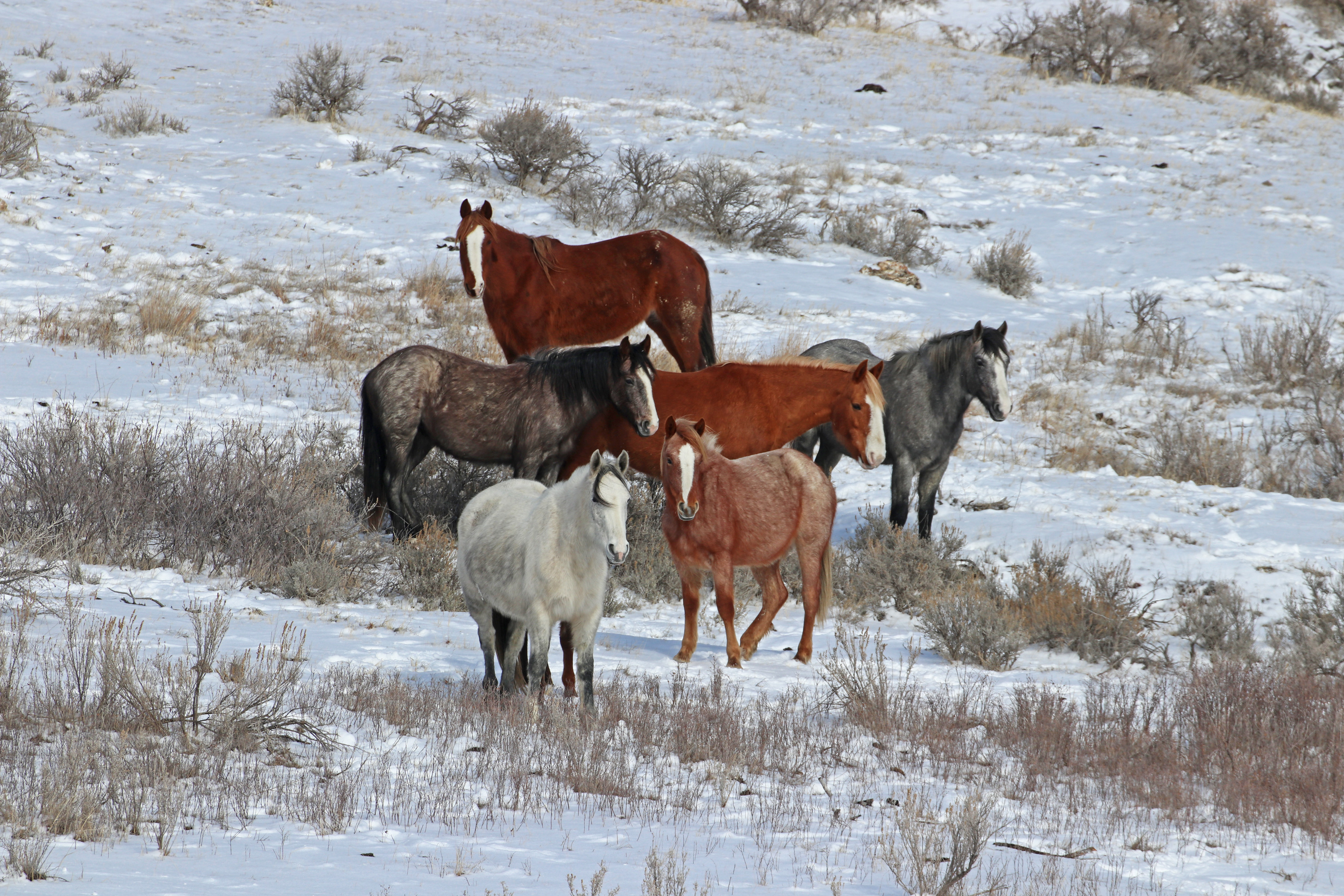The National Park Service (NPS) is accepting public comments on a Scoping Notice for a Management Plan for the wild horses and longhorn cattle in the Theodore Roosevelt National Park (TRNP) that could decimate North Dakota’s only wild horse herd.
Currently, the 180 horses who reside in the TRNP are managed by a 1978 Environment Assessment.
While a new management plan is needed, the NPS’s plan is not acceptable as it proposes six alternatives that range from limiting the herd to an unsustainable 35-60 wild horses to eliminating both the wild horse and livestock herds altogether.
The Theodore Roosevelt horses have roamed the badlands for centuries, and many believe they are descendants of Sitting Bull’s horses and related to the rare Nokota breed.
Yet the NPS classifies the wild horses as “livestock” even though it provides no care for them – as it does for the longhorn cattle – and the horses fend for themselves alongside the bison, elk, and other wildlife. Worse yet, despite scientific evidence showing that wild horses are a native, species, the NPS refers to them as an invasive or non-native species.
The Theodore Roosevelt wild horses deserve better! Moving forward, the NPS must adopt a management plan that uses current science and herd data to keep the number of wild horses large enough to have a healthy breeding population and maintain vital bloodlines – this means a minimum of 150 horses. Instead of using GonaCon, it must also implement a fertility control program with PZP that has a 35-year history of being reversible and safe even for pregnant mares.
Although the Theodore Roosevelt wild horses are not protected under the 1971 Wild Horses and Burros Act, they’re a significant part of the historical and natural heritage of the park and the state. Equally important, they’re a huge tourism draw for North Dakota.
Now is the time to weigh in for humane management and fair treatment of the historic Theodore Roosevelt wild horses. Please take a moment to personalize and send the comment letter below. You must copy and paste the text and submit your comments at the button below.
LETTER
To Whom It May Concern:
Please accept the following comments on the Scoping Notice for the Theodore Roosevelt National Park’s (TRNP) Livestock Management Plan (LMP) for its wild horses and longhorn cattle.
While the National Park Service (NPS) is preparing the LMP, it must stop all roundups and removals of the horses and the use of fertility control.
Additionally, an Environmental Analysis (EA) should consider and analyze the following alternatives:
- Change the designation of the Theodore Roosevelt horses from “livestock” to “wildlife.” The NPS has never explained why they’re designated as livestock and doesn’t acknowledge paleontological evidence and mitochondrial DNA analysis supporting the fact that wild horses are a reintroduced native species to this continent.
- Set a minimum herd size of 150 horses to ensure a genetically viable herd, as recommended by Dr. Gus Cothran, an equine geneticist, for all wild horse herds in the United States.
- If “new blood” needs to be brought into the herd, introduce horses who are historically significant to the TRNP and prioritize the Nokota horses. A 2018 study from Texas A&M found that the historic herd is at risk of inbreeding and recommended introducing new mares and changing removal strategies to preserve genetics and lineages.
- Given concerns about its potential for permanent sterilization and injection site abscesses, eliminate the use of GonaCon for the fertility control program. When administering any fertility control program, the NPS must consider the herd’s genetics and bloodlines as well as the safety of mares. Instead of GonaCon, the NPS should implement a fertility control program using PZP that has been proven to be reversible and safe for the mare.
- If removal of horses needs to take place, use science and genetics to determine what horses will be removed. However, a successful fertility control program should mean that there is no need from removals.
Further, instead of selling captured horses via the General Services Administration Online Auctions website, the NPS must develop an adoption program that screens potential adopters and includes a contract with facility and care requirements and a prohibition on the sale of horses for slaughter.
Finally, due to the controversial nature of the LMP and the myriad of legal, environmental, economic, and social issues it raises, an Environmental Impact Statement is required.
Thank you for your consideration.


